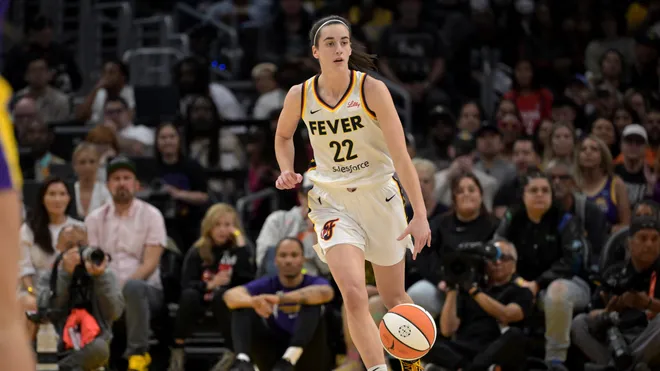Every fire needs a spark. For Major League Baseball, it was Babe Ruth’s mammoth home runs. Take to the hardwood and the intense rivalry between Magic Johnson and Larry Bird is what it took for eyes to take to the National Basketball Association finally. Today, their players make tens of millions, while the most expensive women’s professional sports league, the WNBA, sees a max yearly salary of under $250,000.
How do we bridge the gap? With perspective and patience.
Major League Baseball was formalized in 1903, more than 60 years since the game’s invention. For basketball, the gap was just as large, being birthed in 1891 before the NBA’s formation in 1946. To become a global empire in the world of sports takes time – a lot of it.
The Women’s National Basketball Association (WNBA) has been steadily growing in popularity since its founding in 1996, but it still has a long way to go before reaching the mainstream hype of the NBA. While the league has made significant strides in viewership, marketing, and investment, there are still key challenges that need to be addressed to achieve widespread recognition and financial success. By analyzing the league’s progress and its areas for improvement, it becomes evident that the WNBA specifically is on the right track, but it must accelerate its growth to capitalize on its momentum.
Perhaps one of the brightest signs for the WNBA is television viewing’s upward swing. The 2023 WNBA Finals registered a 36% rise in TV ratings from the previous season, which clearly showed increased attention in the league. More games on the WNBA are seeing prime-time schedules on top-tier networks like ESPN and ABC, making more of a window on for viewership and interaction.
Another primary reason that stimulates interest in the WNBA is building superstars. Superstars like Caitlin Clark and Angel Reese are making huge media buzz. At the same time, current stars like A’ja Wilson, Breanna Stewart, and Sabrina Ionescu are establishing their brands and supporters. The league has attempted to market such players successfully, showcasing their personalities and skills in ways that emulate the NBA’s method of promoting players.
Social media and online content have also helped grow the WNBA’s profile. Viral highlight reels, behind-the-scenes features, and endorsements with brands and influencers have brought more viewers into the league’s fold, particularly younger viewers. Investment in the league is likewise growing, as the WNBA aims to expand in 2025, including the Golden State Valkyries franchise. These moves point toward greater financial investment in the league’s future.
Crossover endorsements and celebrity sponsorships from NBA players have contributed to the WNBA’s profile. Players like LeBron James, Kevin Durant, and Stephen Curry consistently provide endorsement for the league, contributing legitimacy and exposure to women’s basketball. Furthermore, rappers, actors, and influencers increasingly attend WNBA games, facilitating the league’s greater cultural acceptance.
Despite its expansion, the WNBA still struggles with problems that prevent it from reaching NBA-level popularity. Perhaps the greatest is the lack of strong team marketing and identity. While the NBA thrives on classic team rivalries and city loyalty—Lakers vs. Celtics for example—the WNBA has not yet established such dynamics. Creating more powerful team brands and local followings will be crucial to long-term success.
Unpredictable game attendance is another issue. While TV ratings are increasing, many WNBA teams struggle to fill arenas consistently. To address this, the league must enhance the in-game experience so that watching WNBA games is fun and unique. Entertainment, halftime shows, and fan engagement programs can make a live sports experience more appealing.
Media visibility is a challenge for the WNBA as well. With more TV deals, women’s sports remain allotted significantly less media attention than men’s. Increased visibility on sports argument programs (First Take like) and niche programming on networks such as ESPN will put the WNBA into the mainstream conversation. Without constant media stories, it isn’t easy to maintain fan engagement and participation year-round.
The WNBA is undeniably on the right track toward becoming a major sports league, but it needs to accelerate its efforts to sustain and expand its growth. The NBA did not become a global powerhouse overnight—it required decades of investment, marketing, and cultural shifts. Similarly, the WNBA must continue developing star-driven storytelling, fostering intense team rivalries, improving fan engagement, and securing stronger media coverage. If these elements are addressed effectively, the WNBA has the potential to reach MLB and NBA levels of popularity before 2050.


